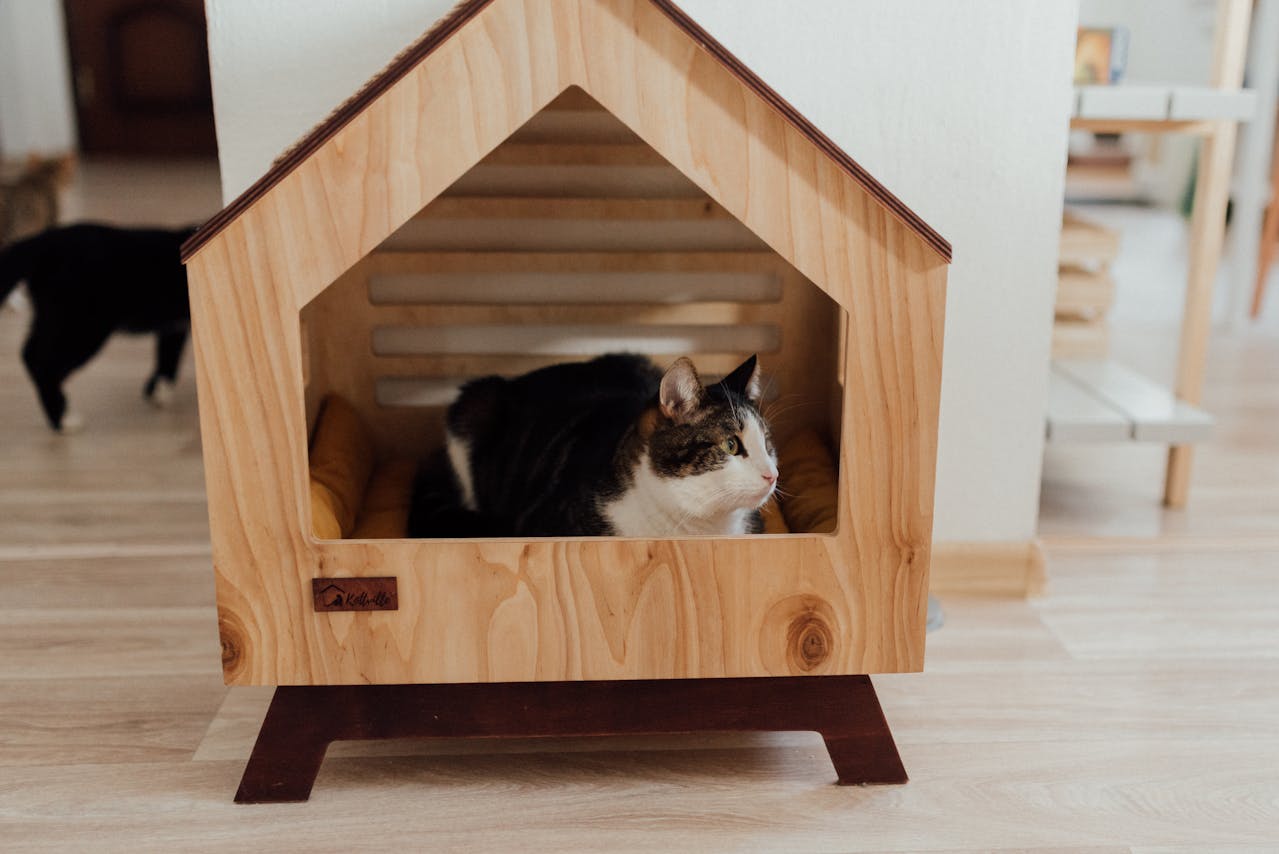Many owners choose to keep their cats indoors for a variety of safety reasons, like avoiding cat fights and snakes. In fact, many Vets prefer to recommend all cats be kept indoors. However, indoor-only cats are at a very real risk of boredom, which can contribute to obesity and anxiety.
So how can you keep your pet safe indoors while also preventing boredom from setting in? This article looks into the benefits of keeping cats inside. It also delves into how to keep them mentally and physically stimulated to prevent boredom, and weight gain, from becoming a problem. Be prepared to learn how to turn your home into a kitty haven.
Contents
•Why Should I Keep My Cat Indoors?
•Safe Ways To Allow Outside Time
•How Do You Keep Indoor Cats Satisfied?
Why Should I Keep My Cat Indoors?
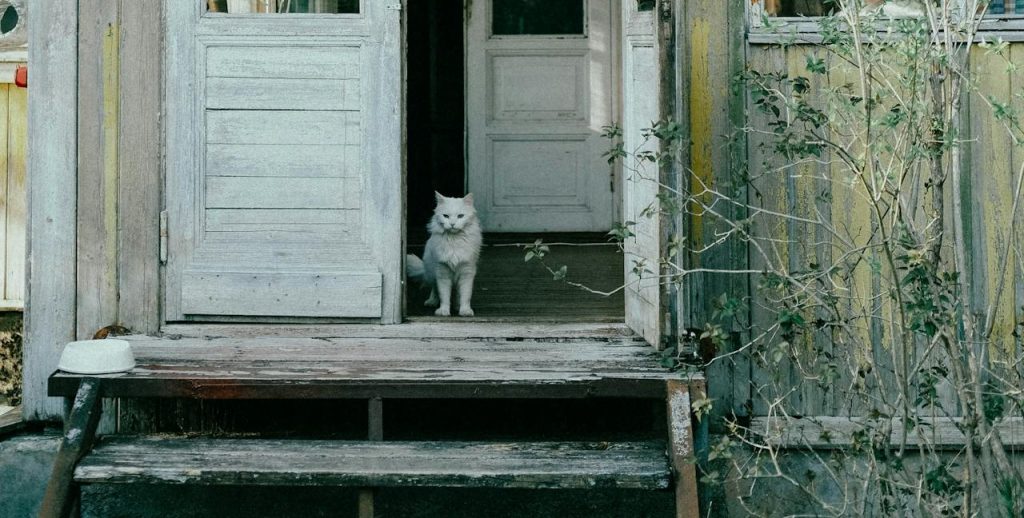
Many owners choose to keep their cats indoors and it is predominantly for their cat’s own safety. There are a lot of risks posed to cats that wander outdoors, and unless you have eyes on your cat 100% of the time they are outside, assume they are getting out of your yard. The main risks to cats are parasites, cat fights, snake bites, getting hit by a car, getting caught in a trap or baited, but let’s look at these in more detail.
Parasites
Our cats are affected by a variety of parasites, including worms, heartworm, fleas, mites, lice and ticks. Most of these can be managed with regular prevention. Worms and fleas can be treated once your cat is showing signs, but the main concern for vets, particularly along Australia’s east coast, is the deadly Paralysis Tick.
Exploring outdoor cats can venture into tick habitat, but the ticks can also be brought into your yard by wildlife. Even indoor-only cats have been reported to get paralysis ticks. As such, it is recommended that all cats, indoor and outdoor, are on parasite prevention, including paralysis tick prevention, with a reputable, reliable product such as Bravecto, Nexgard Spectra or Revolution Plus.
Cat Fights
Cats tend to be solitary creatures and highly territorial. That means that wandering cats are at risk of being attacked by another stray cat, or they may start the fight themselves. Cats carry a lot of bacteria under their claws and in their mouths. This means that any scratches or bites from a cat fight have the potential to develop into an abscess.
Cat Fight Abscesses are the most common cause of fever in cats, which can also lead to lethargy, inappetence, dehydration, shivering, increased heart and breathing rate. They often develop noticeable, rapidly growing lumps around the head and neck, where cats are typically attacked, however, some abscess may not be obvious. In order to treat a cat fight abscess, a vet visit will be required. The vet will lance the abscess and drain it (often under anaesthetic or sedation for the cat’s comfort) and provide antibiotics and anti-inflammatories to treat the infection. Some abscesses may burst on their own, but it is still important to clear up the underlying infection with antibiotics.
Snakes
Coming into the summer season, this is a major concern for our pets. Cats are hunters, and snakes often seem like the ideal prey, but pick on the wrong snake and your cat could pay the price. Snakes are another potentially fatal threat to our cats. 60% of cats bitten by snakes that don’t receive treatment will die and death can occur within 2 hours of a bite. So if your cat is out wandering when they are bitten, they may not make it home in time to receive treatment.
It’s also worth remembering that large pythons may consider a wandering cat as a tasty meal. Every Summer, snake catchers warn owners to keep their cats indoors to prevent sharing more horror stories of pets that became snake food.
Hit By Vehicle
10 Million animals are hit and killed by vehicles in Australia every year. This staggering number includes dogs and cats. The small bodies of our pets cannot take the impact from a collision with a car, which leads to fatalities. Even if your pet doesn’t die on the spot, they may suffer internal injuries that could cause death later, including days later. Some owners may not even notice their cat has been hit by a car if they didn’t see the accident and their cat has no external wounds. Injuries like broken bones and bladder ruptures can be well hidden by our cats.
If you are able to get your cat to the vet after an accident, treatment may be extensive, involving surgery, pinning/plating of bones, hospitalisation, etc. All of these can quickly add up on the bill as they are often prolonged and more complex with patients that are in critical condition.
Trapping & Baiting
While trapping and baiting may seem cruel, it is important to remember that it is a legal practice. Owners are allowed to set up traps on their property for stray animals, as long as the trap doesn’t harm the animal. It is also legal to use baiting for pest species as long as it is as humane or painless for the animal as possible. In Australia, stray and feral cats are considered a Class 2 pest species, which means baiting them is legal.
Any cat that leaves their home property is considered a stray, meaning if your cat is trapped or baited on someone else’s property, then they are within their rights to do so. Remember that cats can be destructive, they hunt wildlife, they can scent mark/spray, they may claw furniture and they may invade another cat’s territory, causing severe stress for the cat or even attacking a cat within its own yard. Many homeowners could easily become frustrated with these behaviours and take action to protect their own property and pets.
Killing Wildlife
As mentioned, cats are considered a Class 2 Pest. That is because they hunt and kill our wildlife. On average, a roaming, hunting pet cat will kill 186 animals, including birds, reptiles and mammals. Many of the species that cats prey on are endangered or rapidly declining in numbers. Studies have found that 86% of cats won’t bring their kills home, so even if your cat never leaves a little present for you, they are probably hunting.
In order to protect our wildlife, it is recommended to keep your cat indoors or confined within an enclosure that prevents them from hunting our native species.
Safe Ways To Allow Outside Time
Council requires that your cat stays on your property, and many owners think that is where their cats stay. However, our cats do not have the same sense of boundaries that we do and can scale fences easily. So can you allow your cat access to the backyard for exploring in a manner that is safe and prevents them from roaming? Yes! There are two main ways this can be done.
Harness & Lead
Cats too can be taught to wear a harness and leash! Kittens learn the quickest, but there is no reason you can’t start with an adult cat. Just start slow. Introduce them to the harness first and use treats to reward any positive interaction with the harness. Then you can start to put the harness over their head, reward and remove it. Slowly increase the amount of the harness you put on, then increase the time they have to wear it to get the reward. After a few training sessions, they should be comfortable venturing out into the yard wearing their snazzy new harness.
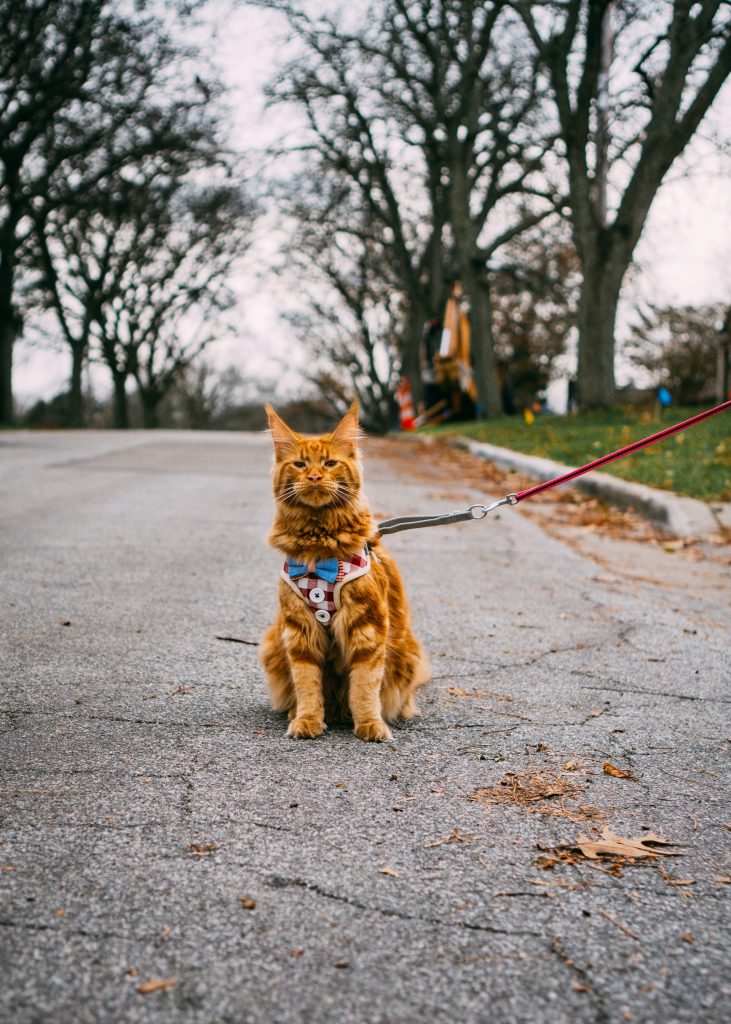
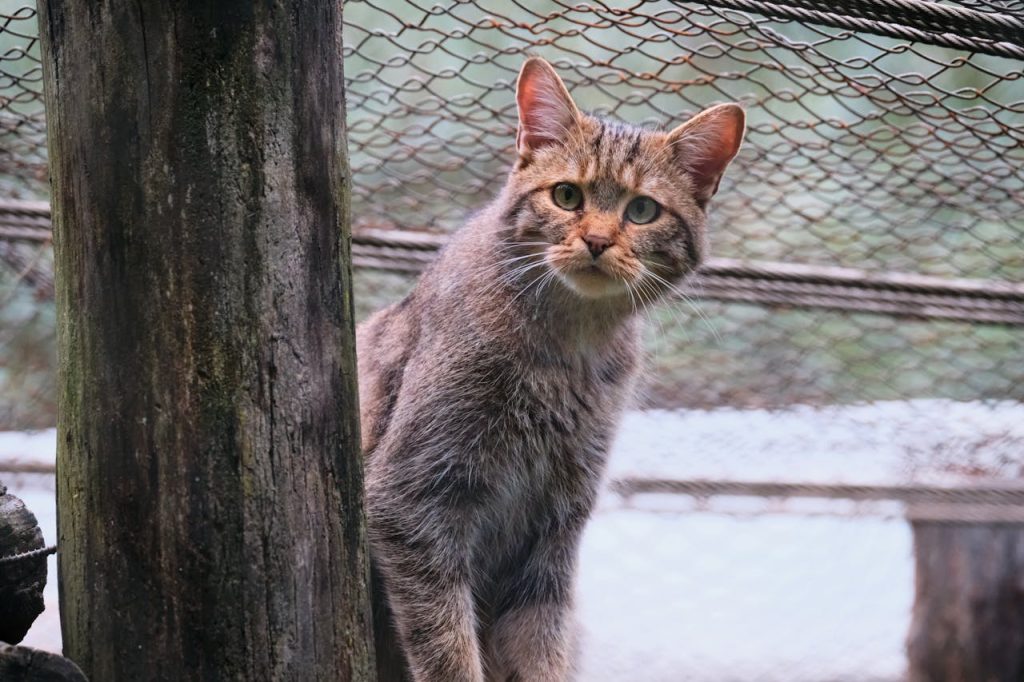
Cat Enclosure
There are some elaborate cat enclosures out there, just have a Google. You don’t have to install a ‘Taj-Ma-Kitty’ in your backyard, but even a small, simple, fenced enclosure can provide your cat with a spot to sun themselves and a chance to smell the outdoors, without the risks attached to being an outdoor cat.
Keep in mind that even in a cat enclosure or on a harness/leash Paralysis Ticks and Snakes are a concern.
How Do You Keep Indoor Cats Satisfied?
To prevent your indoor-only cat becoming a large, lounge lover, you need to ensure all their mental and physical stimulation needs are being met within the comfort of your home. Fortunately, there are lots of options available to turn you home into your cat’s paradise.
Space
If you have an indoor cat, they still need space to explore. Try not to limit them to a single room. Instead, allow access to multiple rooms. Cats are also very clean creatures, which means they don’t like to eat in the same place they toilet, so try to separate the litter tray, feeding and drinking areas in different rooms.
Cat Trees/Towers
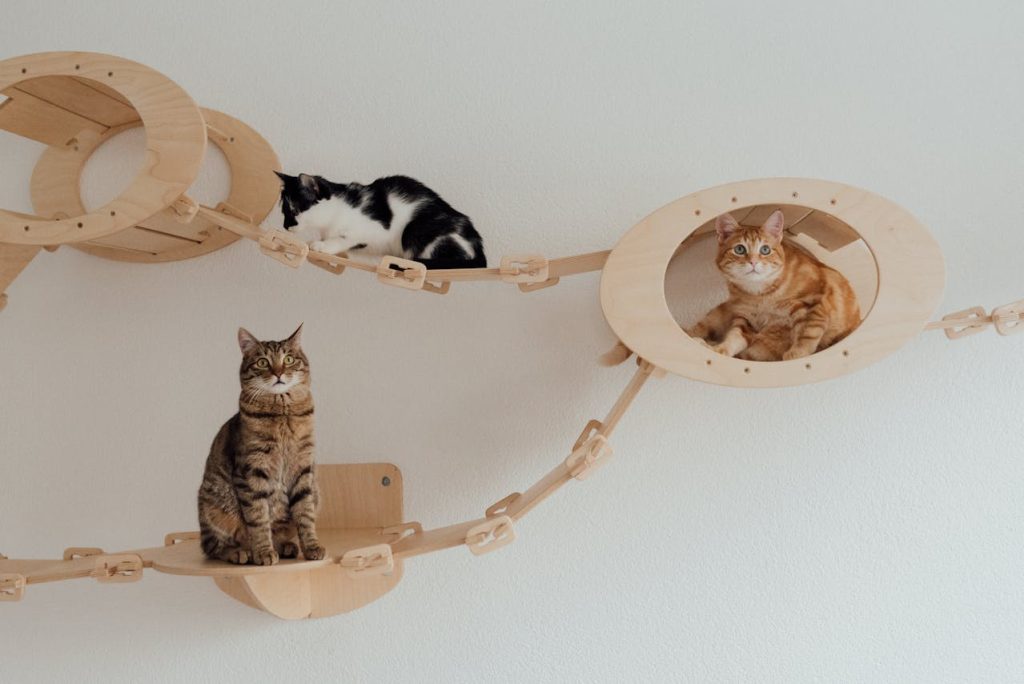
Cats love to climb and get up high. Adding cat trees and towers is one of the best ways to increase the amount of space your cat has to explore by extending vertically. They also encourage climbing, which is a great form of exercise and many cat towers have hiding spaces as well.
Hiding Places

Cats often feel safest when they are hidden (and maybe waiting to pounce on unsuspecting ankles!). They need to have multiple hiding places, such as caves and tunnels, to give them a safe place to run to if they are ever feeling frightened or uncomfortable. Hiding places are also great to explore or settle down in for a nap.
Litter Trays
Litter tray availability can play a major role in preventing anxiety in indoor-only cats. It is best to have one litter tray per cat, plus one extra. The litter trays should be kept in quiet, low traffic, concealed areas as cats feel vulnerable while toileting. The trays should also have some space between them or be in separate rooms to prevent competition for resources.
Slow Feeders
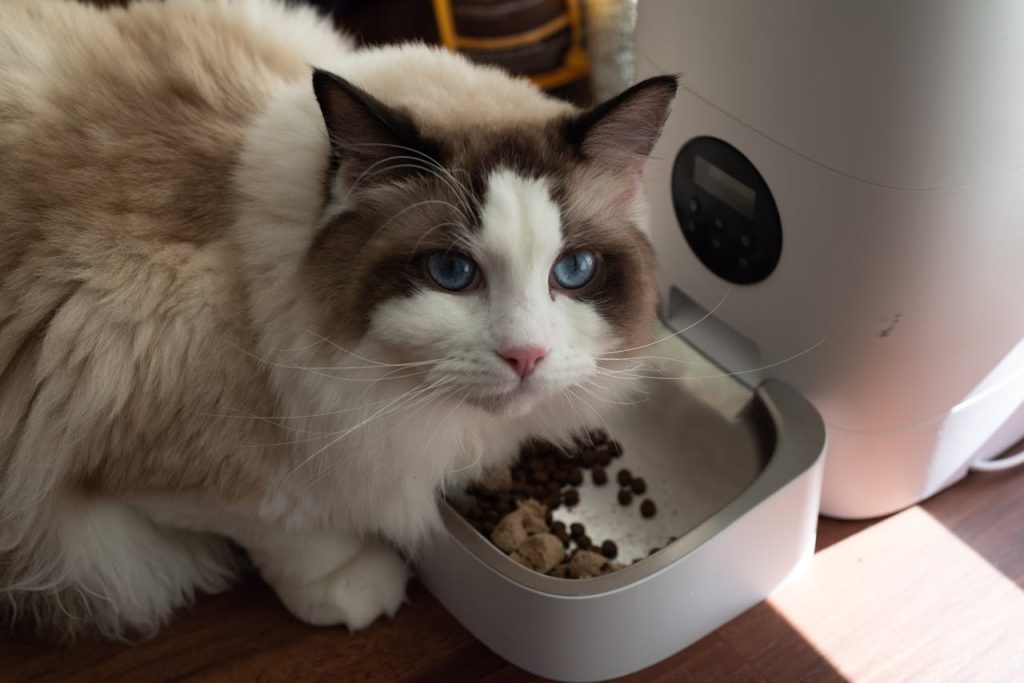
Cats tend to be grazers, but leaving food on offer all day isn’t always the best option – this can be a major cause of obesity! Instead, you can use a timed release food dispenser or a slow feeder to allow your cat to eat throughout the day without overeating.
You could also introduce a slow feeder. Slow feeders and puzzle feeders are designed to mimic hunting, without any wildlife getting hurt. Your cat has to paw, chase and nuzzle to get their food. This provides both mental stimulation as they attempt to work out the trick to releasing the food and physical stimulation as they investigate and play with the feeder.
It is recommended to have and rotate through a couple of different slow feeders, to prevent your cat figuring out the trick too quickly and keep them engaged with the toys.
I love recommended feeders like Lickmats, those from Catit (especially the food trees), Scream and Kongs, but any treat maze that engages your cat is a great option.
Interactive Toys

Interactive toys are another great hunting simulator! These are often toys that roll, wobble or make noise. They often move in reaction to your cat touching them, triggering their hunting instinct. This is a great form of mental stimulation as they investigate and play, as well as a great source of physical exercise to keep indoor cats moving. They help fight both boredom and weight gain.
Personal Play
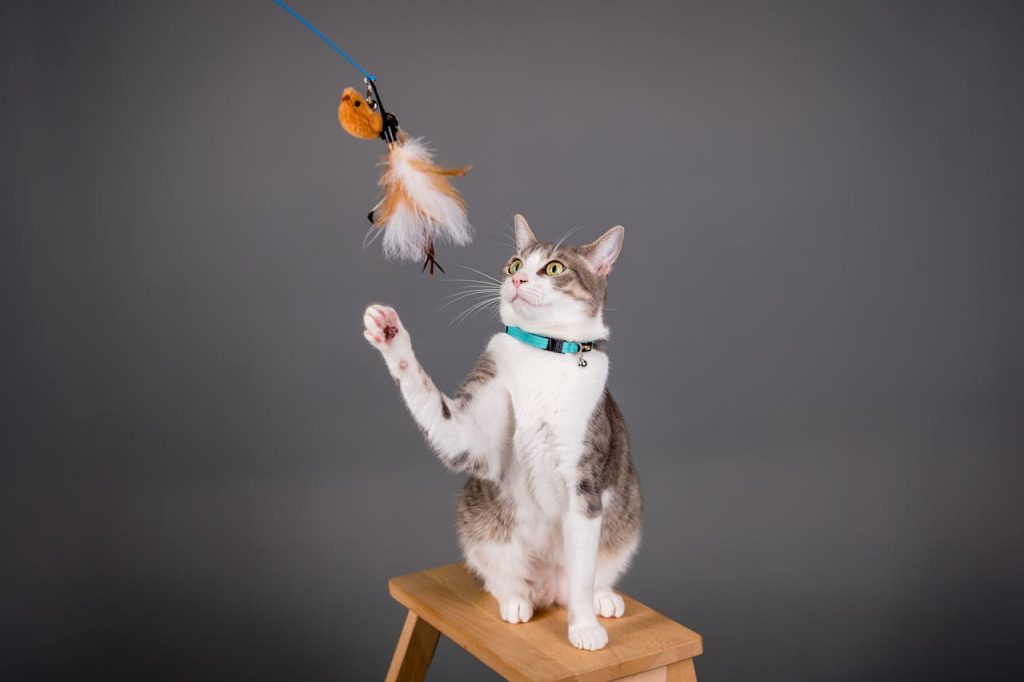
Most importantly, don’t forget the impact that playing with you can have on your cat! The most engaging thing you can do with your cat is play with them. It is mentally and physically stimulated, and it helps to strengthen the bond you have with your cat.
If you are feeling a little adventurous, you might even try training your cat. Cats can respond to training just as well as dogs and learn tricks like ‘Sit’, ‘Roll Over’, ‘Come’, ‘High Five’ and ‘Spin’. Training is very mentally stimulating for cats, quickly tiring them out, but it also builds a closer bond between you. It’s amazing what a little food motivation can do and you’ll have a fun trick to show off next time you have friends over.
So, when weighing up the risks and benefits, keeping cats indoors really is the best way to protect them. You don’t have to succumb to the pitfalls of having an indoor-only cat though, and be left with a boredom kitty that’s driving you up the walls. There are plenty of ways that you can keep your cat happy within the comfort of your own home, and you don’t have to spend a fortune to do it! Nobody said a DIY cat tree or some Bunnings netting around your patio wouldn’t do the trick.

